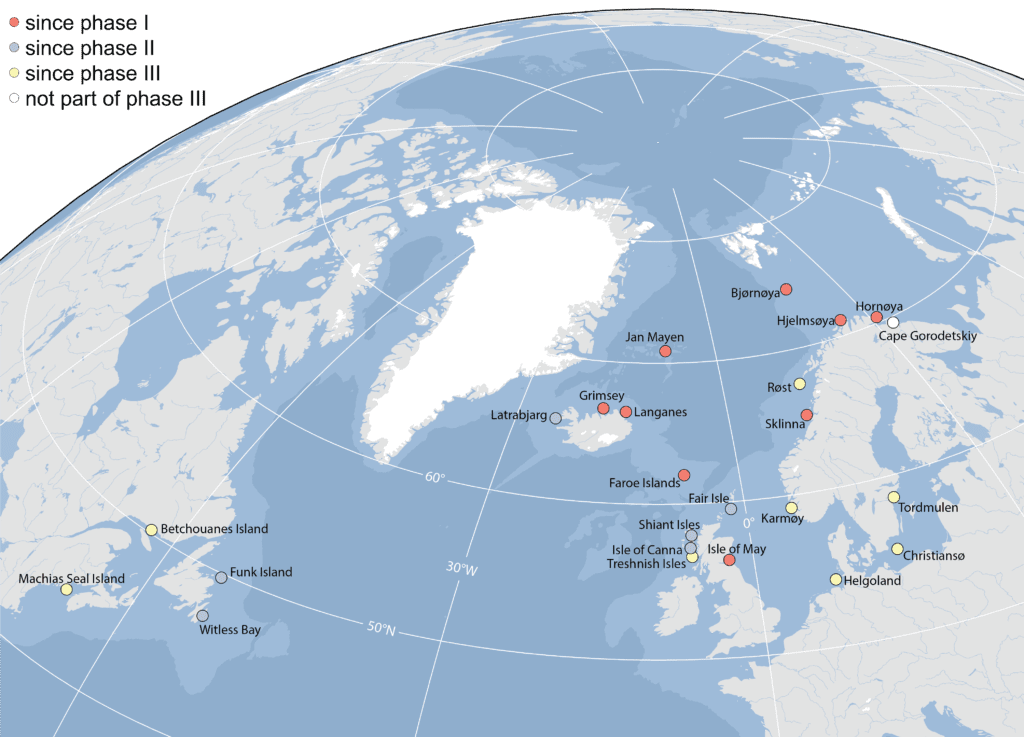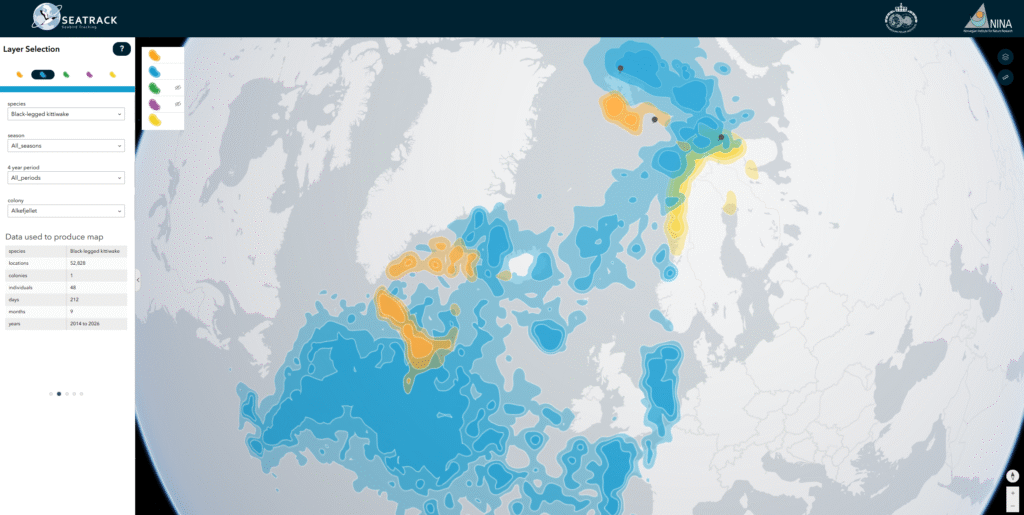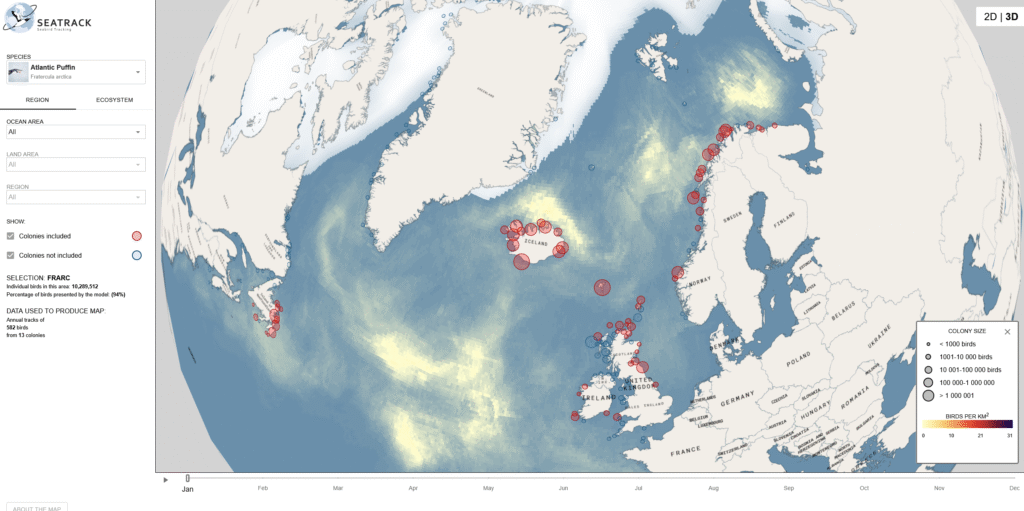Common guillemots / Common murre (Uria aalge), representing one of five pelagic diving species within the scope of the project, are being instrumented with GLS and GPS loggers at 24 SEATRACK localities.
The Common guillemot has been a SEATRACK species since the start of the programme in 2014. Since 2019 SEATRACK is deploying GLS loggers on common guillemot chicks. Current locations inlcude Bjørnøya, Sklinna and Machias Seal Island.
Since the North Atlantic population is numerous and widespread IUCN classifies Common guillemots as “Least concern”.

The common guillemot or common murre has a circumpolar distribution, occurring in the low-arctic and boreal waters of the north Atlantic and north Pacific. The common guillemot is distinguishable from the Brünnich’s guillemot by the longer and more pointed bill without the white stripe at the base of the upper mandible, and by the dark mottled marks along the flanks.
The common and the Brünnich’s guillemots are the largest extant auks (Alcidae) and have the highest flight cost, for their body size, of any animal. They are accomplished divers, reaching depths of 170-230 m. Common guillemots feed primarily on schooling pelagic fish such as capelin, sand-lance and small gadoids.
Featured image: Sven-Håkon Lorentsen.

View data




